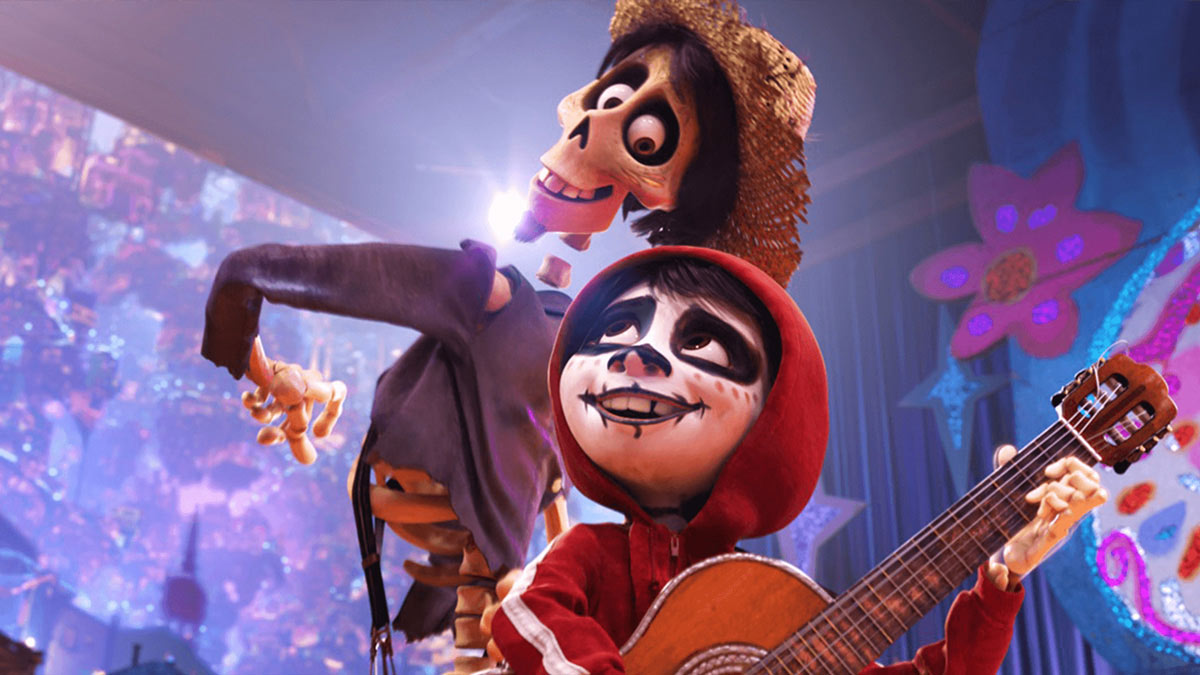
(C) 2018 Disney/Pixar. All Rights Reserved. (C) 2018 Disney. All Rights Reserved.
“Coco” Respect for the overflowing Mexican culture!
2018.03.23
Why is the original title named after the most silent and plain character?
Now, ``Coco'' is also the theme song, but the English title is actually completely different from ``COCO.'' This is the name of Miguel's 100-year-old great-grandmother, who appears in the play. She sleeps most of the day, does not have eloquent conversations with Miguel, and her emotions are barely depicted. In fact, Elena, the nagging grandmother, and Imelda, the great-great-grandmother we meet in the land of the dead, are portrayed as more powerful characters, so why is COCO's great-grandmother's name in the title?
However, after watching the movie, you realize that while the film is a high-pitched song about the adventures of a man who crosses borders, in the end it turns into a paean to the people who protect their hometowns. After her husband passed away, her great-great-grandfather Imelda took care of her daughter by making shoes on her own, COCO, whose daughter inherited the shoemaking business, and the family continued to cherish their work, expanding the shop and growing. and descendants. COCO, who is nearing the end of his life, is a symbolic figure with deep roots in Mexico.
Another figure who symbolizes Mexico's regional character is the painter Frida Kahlo. Although she suffered lifelong physical pain from a traffic accident, she sublimated that pain into self-portraits and continued to paint them along with Mexican culture. The production staff peppers the film with motifs related to Frida.
For example, Dante, a stray dog who befriends Miguel and goes with him to the land of the dead. This dog is a XOLOITZCUINTLE, known as a hairless dog that originated in Mexico. Frida loved this dog and kept it in the so-called "Blue House" (now the Frida Kahlo Museum) where she lived with her husband, the late Mexican art master Diego Rivera, and it also appears in her self-portraits.
In ancient times, the Xoloitzcuintsle was said to be a messenger of the gods who was eaten by the indigenous people of Mexico during religious ceremonies, and its name comes from the earth god Xolotl, who used it to devour the souls of the dead. It is said to be responsible for taking you to your destination. In fact, they are intelligent and gentle, and are said to be used as watchdogs and children's weights in Mexico, and they also play an important role in guiding Miguel in the movie. Frida and her husband are passionate about breeding this dog, and the Xoloitzkuinzle has made its existence known worldwide.
Also, in the film, Frida draws a picture of a papaya in 1942, when she was asked by First Lady Camacho to draw it, but the painting was rejected because it was too sexually suggestive. This stems from the fact that papayas were depicted in the center of her still life paintings depicting papayas, as well as her paintings with motifs of ``The Last Supper.''
Frida Kahlo's life is famously portrayed in the movie " Frida ," in which Mexican actress Salma Hayek plays her. There is also "Cradle Will Rock" (directed by Tim Robbins), which tells the story of how her husband, Diego Rivera, a revolutionary in the Mexican mural movement, was commissioned to paint a mural titled "Man at the Crossroads" at Rockefeller Center in New York in 1933, but the mural was destroyed just before completion because he placed a portrait of the socialist Lenin alongside the founders of the United States. Watching these two films, the passion and vitality of 20th century artists who tried to create a unique Mexican art style emerges from a different angle.
Text: Yuka Kinbara (Kinbara Yuka)
Movie journalist. Currently writing for many media such as ``Kinema Junpo'', ``Soen'', ``Kettle'', and ``Haha no Tomo''. Her books include ``Broken Girl'' (Film Art Publishing), which examines girlhood and violence in movies. He has also contributed to ``100 American Films of the 1990s'' (Gijutsu Shimbunsha) and ``Asian Film Forest'' (Movie Map of the New Century) (Sakushasha). His works include ``Actors File Satoshi Tsumabuki'', ``Actors File Masatoshi Nagase'' (both published by Kinema Junposha), and ``Legendary Film Art Directors x Yohei Taneda'' (Space Shower Network), for which he was in charge of long interviews and composition.
"Coco"
Distribution: Walt Disney Japan
(C)2018 Disney/Pixar. All Rights Reserved.
(C)2018 Disney. All Rights Reserved.
*Information at the time of article publication in March 2018.

